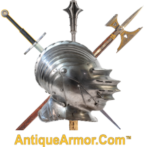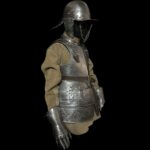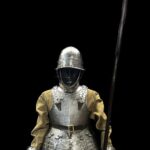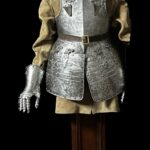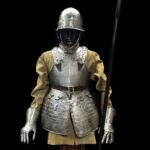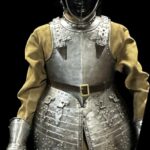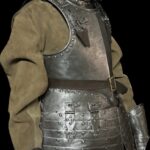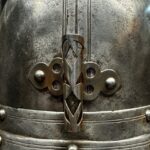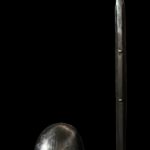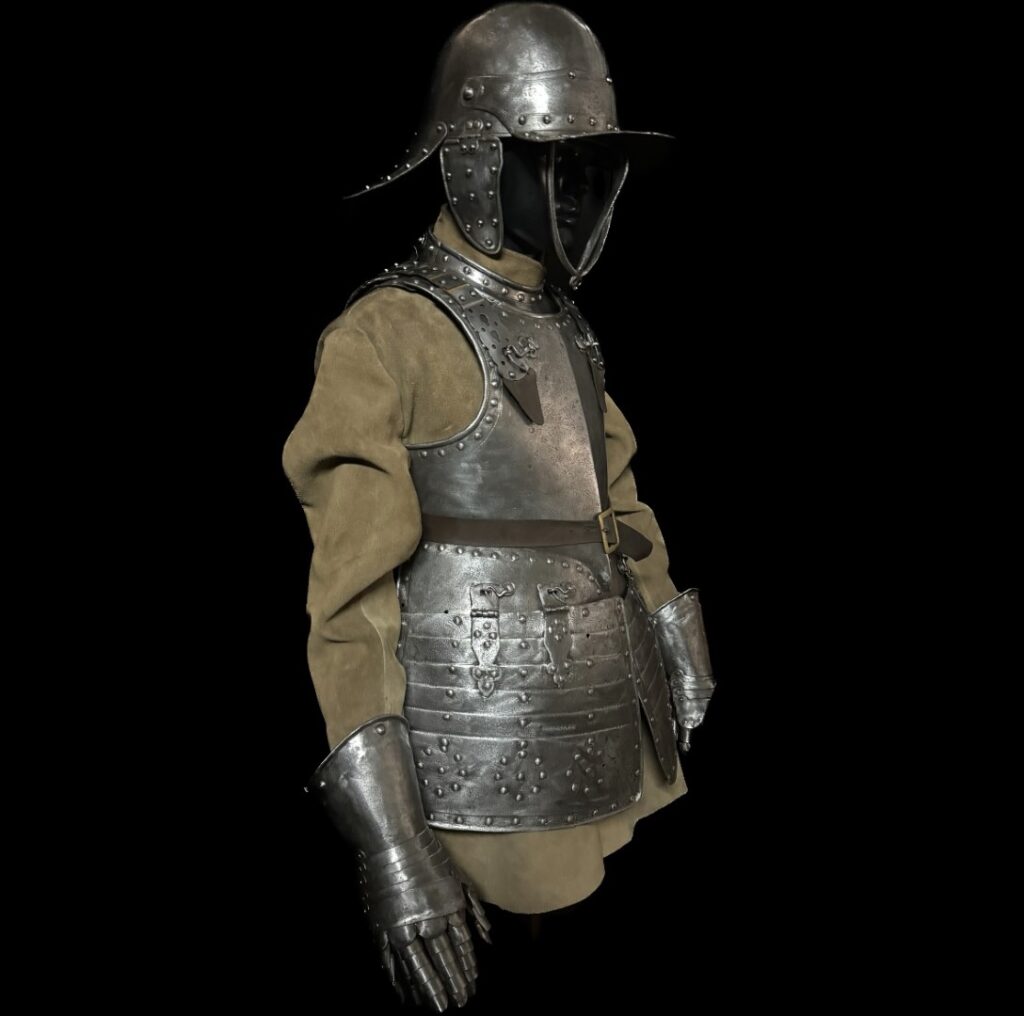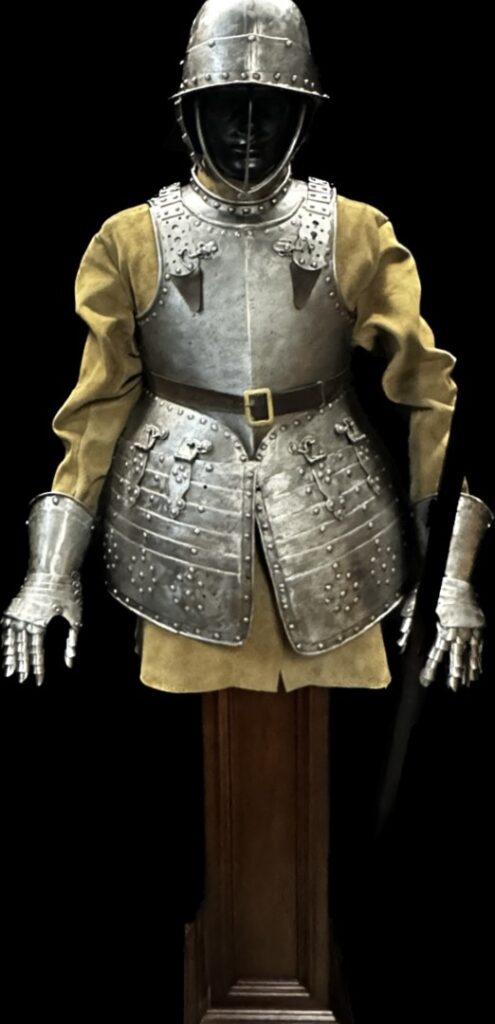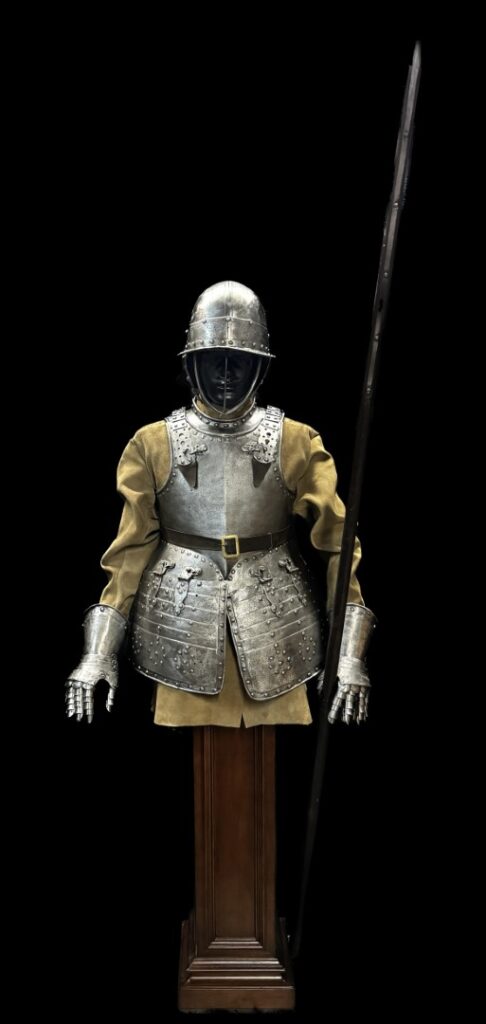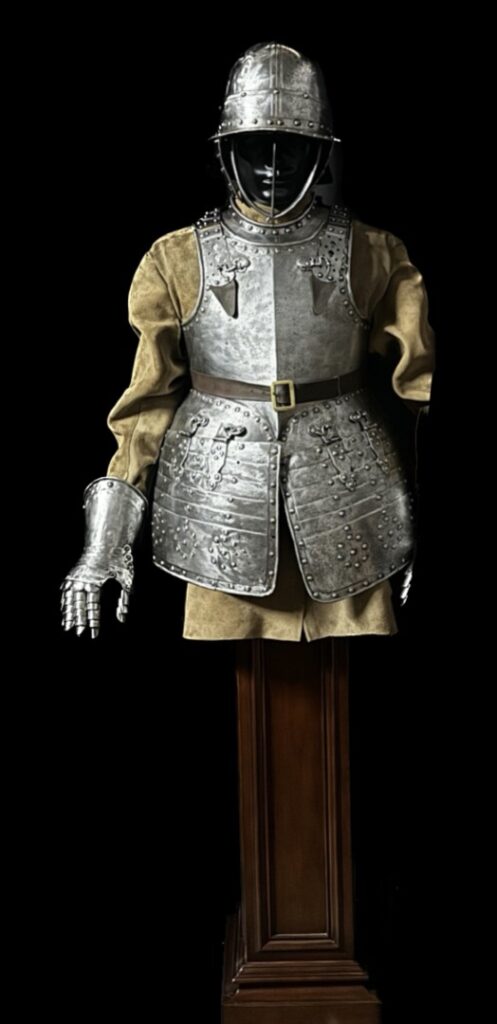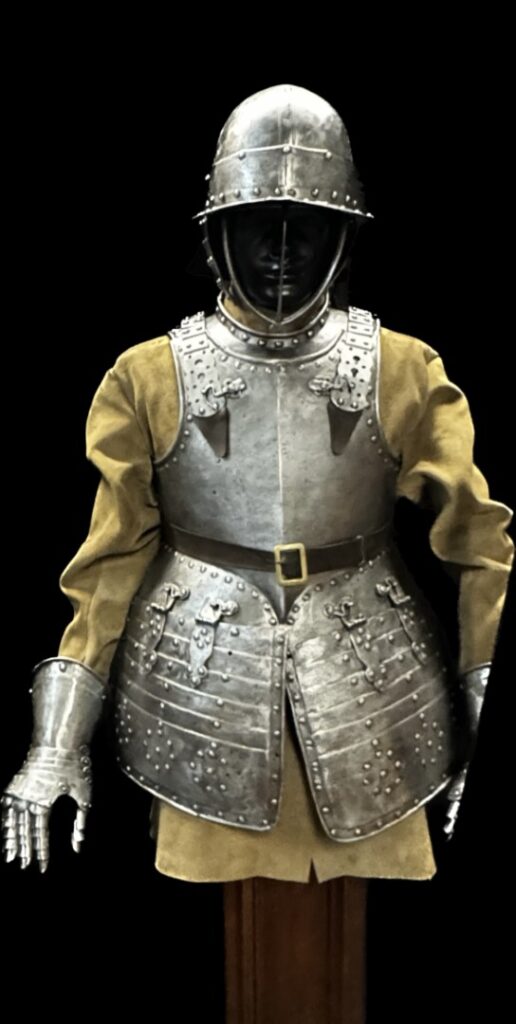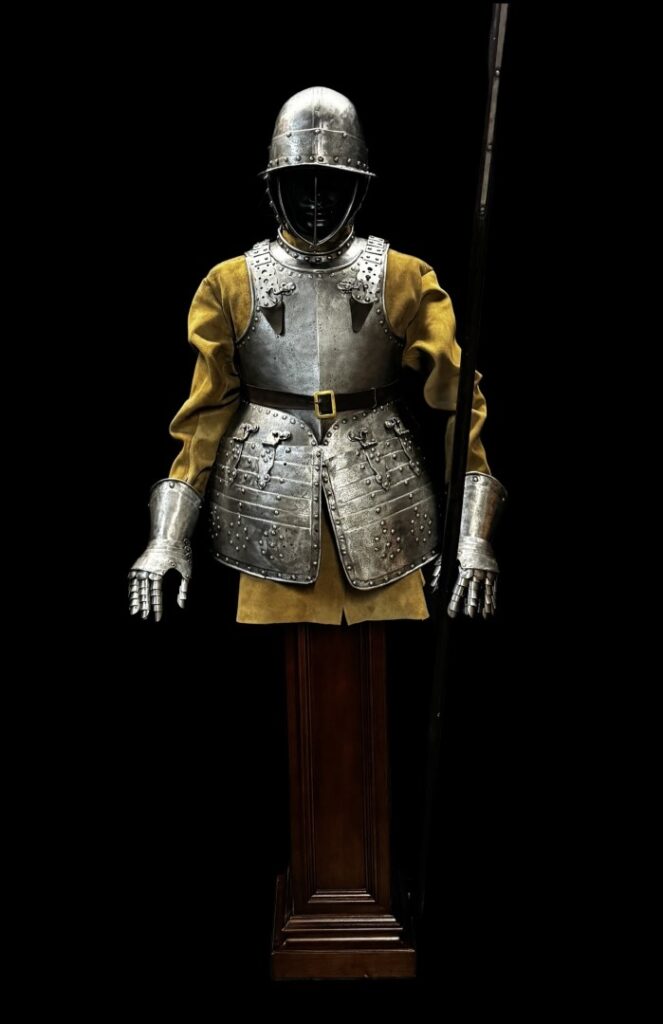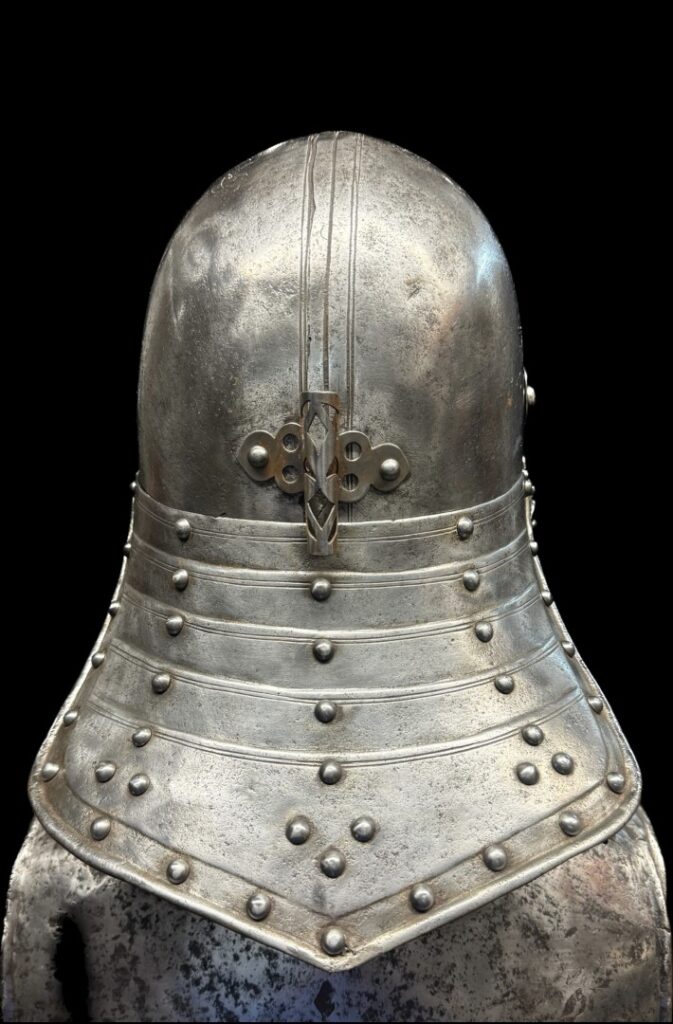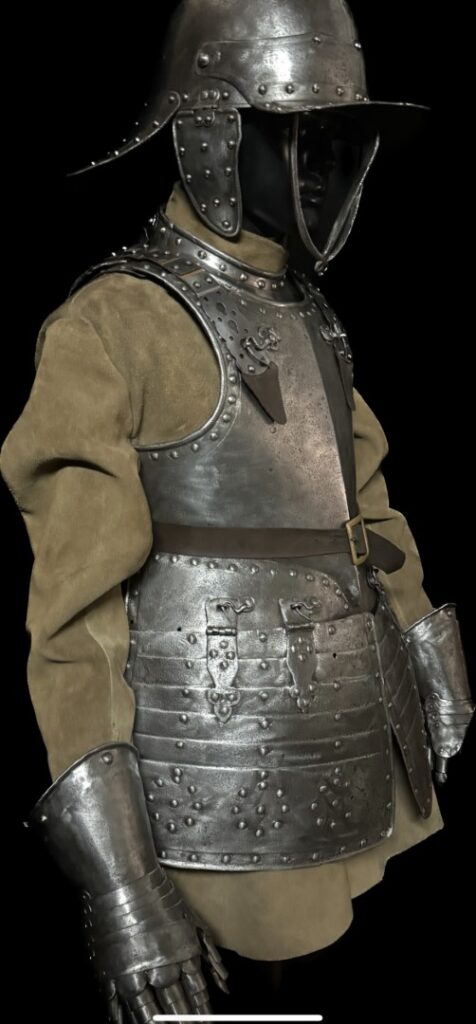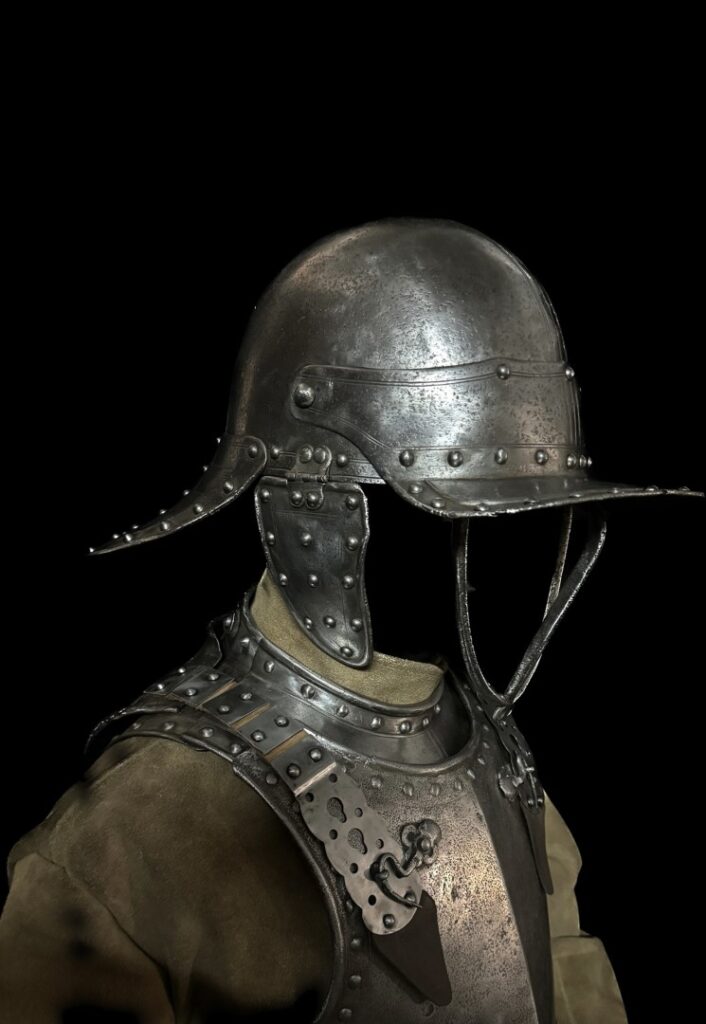1650) AN ENGLISH PIKEMAN’S ARMOR CIRCA 1620 IN SUPERB CONDITION: This is a highly collectible piece of pikemen’s armor from a major collection. It would look exceptional in any collection, office, or library. With the exception of the leather buff coat and leather belt (organics), this composite armor is all original, period.
Description: Constructed with an Officers grade Tri-bar Zischagge (lobstertail) helmet, a breastplate, and a backplate ( cuirass) secured to each other with laminated metal straps, the backplate with a rare proof mark (bulletproof), very large square one-piece tassets that imitated laminated tassets and fingered gauntlets, and a buff coat. With an original wide-head pike and haft! The armor is elegantly mounted on a plinth.
In England, the Zischägge was called a “pot,” which was the designation for any open-face helmet. The Zischägge has an interesting story. The Europeans copied it from the Turks, who called it a chichak or shishaks. It was used from circa 1600 to 1650. For the complete story, see Armor in the Oriental Fashion, page 267-#15 in my book. The Zischagge on this armor is made of two-piece construction with a plum holder and five lames at the back of the neck.
Discussion: Pikes were used in large numbers by groups of pikemen on the front lines. A pikeman was a front-line heavy infantry man-at-arms who would stop an advancing assault by cavalry by setting up a wall of pikes (spearheads) at a moment’s notice. The pikemen would create their wall with their long pikes and effectively stop a mounted cavalry charge. The cavalry charge was the doomsday tactic of its time. Pikes were strictly used as a deterrent to the cavalry. They were not effective combat weapons; they were clumsy and only functioned at long distances.
In Grimmelshausen’s Springinsfeld text of 1676, he states:
“He who kills a pikeman that he could spare kills an innocent. A pikeman harms nobody that does not run into the pike by himself.”
The above is a clear view of the pike’s use on the battlefield. Pikemen held their ground, forming a wall of sharp pikes to prevent the oncoming charge of cavalry and infantry.
The English and Swiss, in particular, were known for their successful use of pikes. Pikes were used as late as the Napoleonic Wars serving as a line of defense in front of men armed with muskets. It could be argued that pikes were used as early as the Macedonian phalanx, circa 359 BC. However, the golden age of pike warfare to stop a cavalry charge was from 1450 to 1675
Conclusion: A superb example in very good condition that is very elegantly mounted and can be the centerpiece of any collection. Priced to sell today for less than you think!!!*
